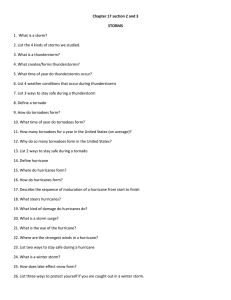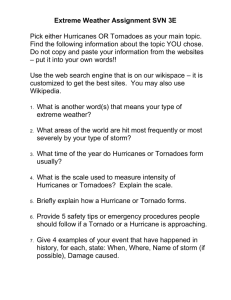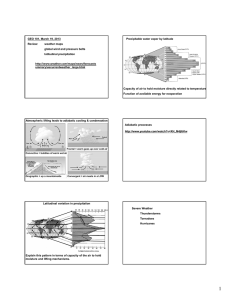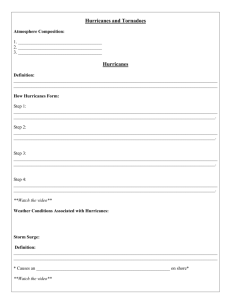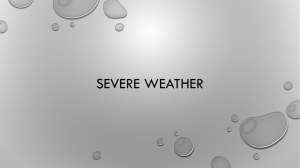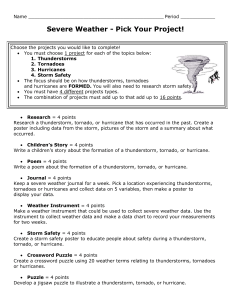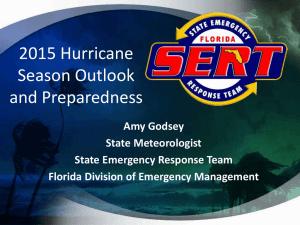File
advertisement
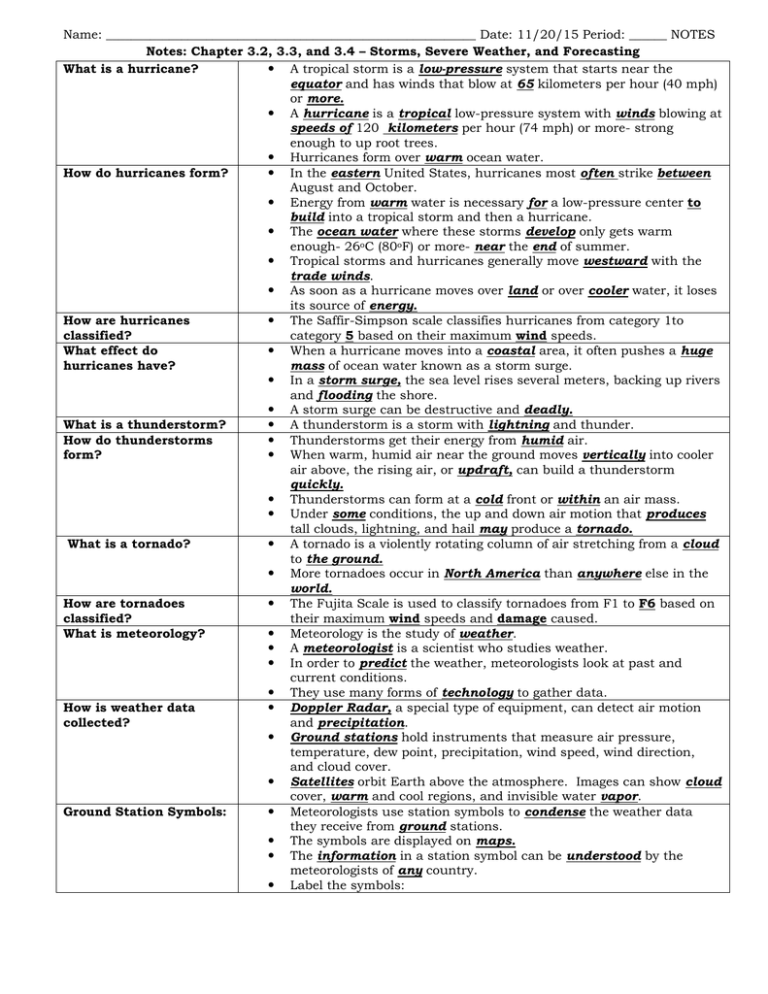
Name: ___________________________________________________________ Date: 11/20/15 Period: ______ NOTES Notes: Chapter 3.2, 3.3, and 3.4 – Storms, Severe Weather, and Forecasting What is a hurricane? A tropical storm is a low-pressure system that starts near the equator and has winds that blow at 65 kilometers per hour (40 mph) or more. A hurricane is a tropical low-pressure system with winds blowing at speeds of 120 kilometers per hour (74 mph) or more- strong enough to up root trees. Hurricanes form over warm ocean water. How do hurricanes form? In the eastern United States, hurricanes most often strike between August and October. Energy from warm water is necessary for a low-pressure center to build into a tropical storm and then a hurricane. The ocean water where these storms develop only gets warm enough- 26oC (80oF) or more- near the end of summer. Tropical storms and hurricanes generally move westward with the trade winds. As soon as a hurricane moves over land or over cooler water, it loses its source of energy. How are hurricanes The Saffir-Simpson scale classifies hurricanes from category 1to classified? category 5 based on their maximum wind speeds. What effect do When a hurricane moves into a coastal area, it often pushes a huge hurricanes have? mass of ocean water known as a storm surge. In a storm surge, the sea level rises several meters, backing up rivers and flooding the shore. A storm surge can be destructive and deadly. What is a thunderstorm? A thunderstorm is a storm with lightning and thunder. How do thunderstorms Thunderstorms get their energy from humid air. form? When warm, humid air near the ground moves vertically into cooler air above, the rising air, or updraft, can build a thunderstorm quickly. Thunderstorms can form at a cold front or within an air mass. Under some conditions, the up and down air motion that produces tall clouds, lightning, and hail may produce a tornado. What is a tornado? A tornado is a violently rotating column of air stretching from a cloud to the ground. More tornadoes occur in North America than anywhere else in the world. How are tornadoes The Fujita Scale is used to classify tornadoes from F1 to F6 based on classified? their maximum wind speeds and damage caused. What is meteorology? Meteorology is the study of weather. A meteorologist is a scientist who studies weather. In order to predict the weather, meteorologists look at past and current conditions. They use many forms of technology to gather data. How is weather data Doppler Radar, a special type of equipment, can detect air motion collected? and precipitation. Ground stations hold instruments that measure air pressure, temperature, dew point, precipitation, wind speed, wind direction, and cloud cover. Satellites orbit Earth above the atmosphere. Images can show cloud cover, warm and cool regions, and invisible water vapor. Ground Station Symbols: Meteorologists use station symbols to condense the weather data they receive from ground stations. The symbols are displayed on maps. The information in a station symbol can be understood by the meteorologists of any country. Label the symbols: Air pressure on weather maps. An isobar is a line that connects places that have the same air pressure. Each isobar represents a different air pressure value. All the isobars together, combined with the symbols for highs and lows, show the patterns of air pressure that produce weather systems. Each isobar is labeled with the air pressure for that whole line in units called millibars. A lower number means lower air pressure.
